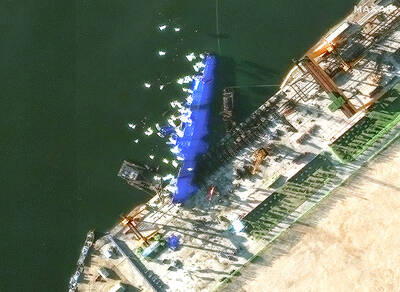Where does that coffee cup, disposable razor or unwanted TV end up once it’s tossed to the curb? Using an electronic tracking device about the size of a matchbook, Massachusetts Institute of Technology (MIT) researchers are tagging about 3,000 pieces of Seattle trash to get people thinking about what they throw away and where it ends up.
“Seeing where your trash goes allows you to change your behavior,” said Assaf Biderman, associate director of MIT’s SENSEable City lab and a project leader. “Will you refill a cup instead of throwing away a disposable one?”
Researchers are visiting the homes of hundreds of Seattle volunteers to affix electronic tags on about 10 to 15 pieces of their household trash, such as pizza boxes, Styrofoam cups, slippers and scrap metal. The volunteers will dispose of the item as they normally would.
The battery-operated smart tags rely on cellphone technology to send information back to MIT computers, allowing researchers — and the public — to monitor the trash in real-time as it moves through the waste stream to its final destination. The public will be able to follow the trash migration at an exhibit that opens at Seattle’s Central Library on Friday.
RAISING AWARENESS
Jennifer Giltrop of Seattle said she’s curious to see what happens to the empty wine bottle, a used printer cartridge and a plastic bag that she recently had tagged.
“We know where we purchase our items from, but we’re not always as aware of what happens when we throw things away,” said Giltrop, 38, who is assistant director of Seattle’s main library. “We’re aware of recycling, but what’s the process?”
Biderman said the project would allow researchers to study in detail how efficiently, or inefficiently, the waste removal system works.
Does recycling end up being recycled rather than in the landfill? Does it take weeks rather than hours or days for trash picked up from one Seattle neighborhood to get to the transfer station?
“We’re definitely a throwaway society that sets it and forgets it,” said Brett Stav, planning and development specialist with Seattle Public Utilities. “A lot of people forget about what happens to the things that they throw away and they don’t really factor in their impact.”
In Seattle, about 716,320 tonnes of waste is discarded each year. About half of that ends up in the landfill, while the rest is recycled, reused or composted. But about two-thirds of the city’s garbage that ends up in the landfill, including food and garden waste, can be recycled, the latest figures from 2006 show.
“We’re interested in improving our collection system,” Stav said, noting the city collects garbage from 150,000 homes on different routes five days a week.
Trash is taken to two city transfer stations before being loaded onto a train to a landfill in Oregon. The city may find out that some routes take longer than others, Stav said.
Biderman said Seattle was chosen because of its reputation for recycling and its advanced waste disposal system.
Seattle now recycles about 50 percent of its overall waste, compared with 38 percent five years ago. The city hopes to recycle 60 percent of its waste by 2012. The national recycling rate is about 32 percent.
NO BOWLING BALLS
Pete Keller, general manager for Allied Waste, said about 4 percent of the recycling they pick up from Seattle and surrounding cities can’t be recycled. This includes everything from bowling balls and kitchen knives to half-filled jars of peanut butter and engine parts, he said.
Once workers sort through the recycling, they sell it to domestic and some foreign markets. Soda cans are made back into aluminum products, and cardboard turned back into boxes, paper and packaging materials, Keller said.

Four people jailed in the landmark Hong Kong national security trial of "47 democrats" accused of conspiracy to commit subversion were freed today after more than four years behind bars, the second group to be released in a month. Among those freed was long-time political and LGBTQ activist Jimmy Sham (岑子杰), who also led one of Hong Kong’s largest pro-democracy groups, the Civil Human Rights Front, which disbanded in 2021. "Let me spend some time with my family," Sham said after arriving at his home in the Kowloon district of Jordan. "I don’t know how to plan ahead because, to me, it feels

‘A THREAT’: Guyanese President Irfan Ali called on Venezuela to follow international court rulings over the region, whose border Guyana says was ratified back in 1899 Misael Zapara said he would vote in Venezuela’s first elections yesterday for the territory of Essequibo, despite living more than 100km away from the oil-rich Guyana-administered region. Both countries lay claim to Essequibo, which makes up two-thirds of Guyana’s territory and is home to 125,000 of its 800,000 citizens. Guyana has administered the region for decades. The centuries-old dispute has intensified since ExxonMobil discovered massive offshore oil deposits a decade ago, giving Guyana the largest crude oil reserves per capita in the world. Venezuela would elect a governor, eight National Assembly deputies and regional councilors in a newly created constituency for the 160,000

North Korea has detained another official over last week’s failed launch of a warship, which damaged the naval destroyer, state media reported yesterday. Pyongyang announced “a serious accident” at Wednesday last week’s launch ceremony, which crushed sections of the bottom of the new destroyer. North Korean leader Kim Jong-un called the mishap a “criminal act caused by absolute carelessness.” Ri Hyong-son, vice department director of the Munitions Industry Department of the Party Central Committee, was summoned and detained on Sunday, the Korean Central News Agency (KCNA) reported. He was “greatly responsible for the occurrence of the serious accident,” it said. Ri is the fourth person

Poland is set to hold a presidential runoff election today between two candidates offering starkly different visions for the country’s future. The winner would succeed Polish President Andrzej Duda, a conservative who is finishing his second and final term. The outcome would determine whether Poland embraces a nationalist populist trajectory or pivots more fully toward liberal, pro-European policies. An exit poll by Ipsos would be released when polls close today at 9pm local time, with a margin of error of plus or minus 2 percentage points. Final results are expected tomorrow. Whoever wins can be expected to either help or hinder the